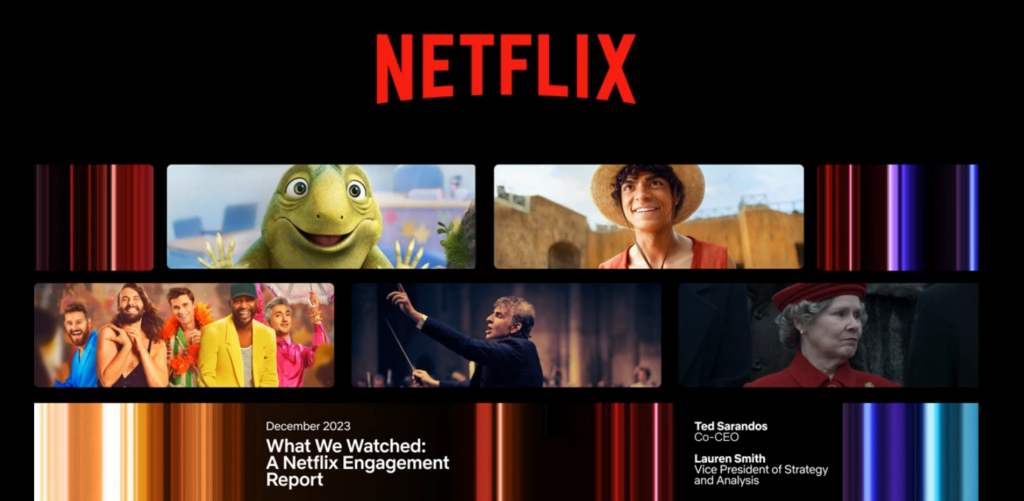
Netflix, a streaming giant with a subscriber base of 200 million, has had a tumultuous year. Public battles with the SAG and WGA have requested greater transparency in their contacts for compensation for successful shows. The WGA, in particular, went on strike earlier this year; citing these hidden ‘watch hour’ numbers as a main contention, leading to upending the releases of several films and series. Netflix, eager to give a present to the retired strikers and let bygones be, has responded by releasing a massive data dump on the in-workings and operations of Netflix to the public.
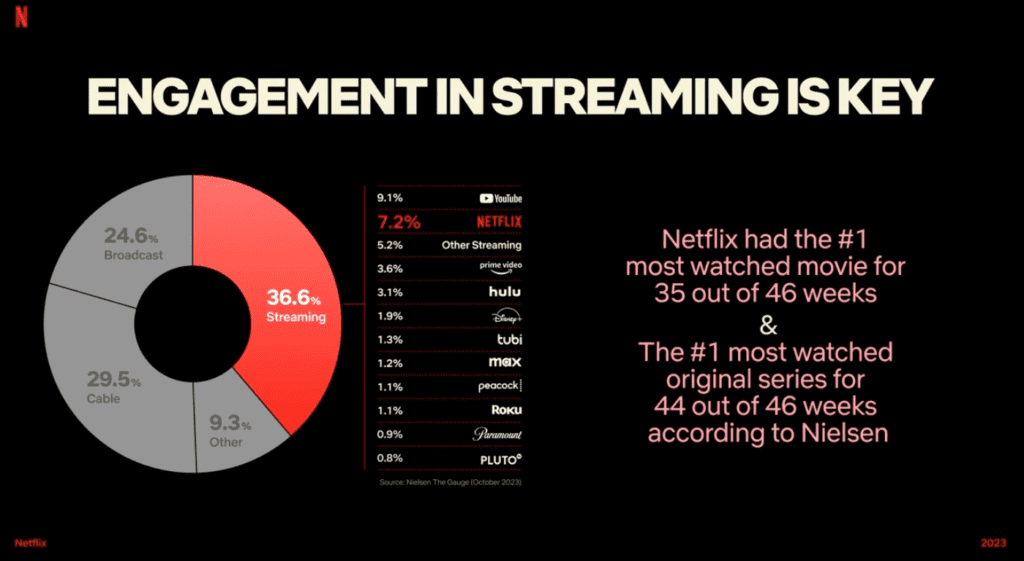
RELATED: With Box Office Wins, Angel Studios Shows You Don’t Need Hollywood Degeneracy For Success
More than 18,000 movies and TV seasons were watched between January and June. “Those 18,214 titles received at least 50,000 hours of viewing over the six months, accounting for roughly 99 percent of all viewing on Netflix”, said VP of Strategy and Analysis, Lauren Smith, during a data presentation on Tuesday.
It is the most in-depth look at viewing that Netflix has ever made public. The presentation has been set to “unlisted” on YouTube since.

With over 800 million hours of viewing time, The Night Agent ranks highest among streaming platforms while fan favorites Ginny and Georgia, The Glory, and Wednesday round-up a significant audience share. Non-English stories generate 30% of all viewing, showcasing the viewership’s enthusiasm for this content; mainly in the form of Korean soap operas and Spanish novellas. Suits, which dominated the Nielsen U.S. streaming charts for much of the summer and fall, had a combined 599 million hours of viewing worldwide on Netflix across all nine seasons.
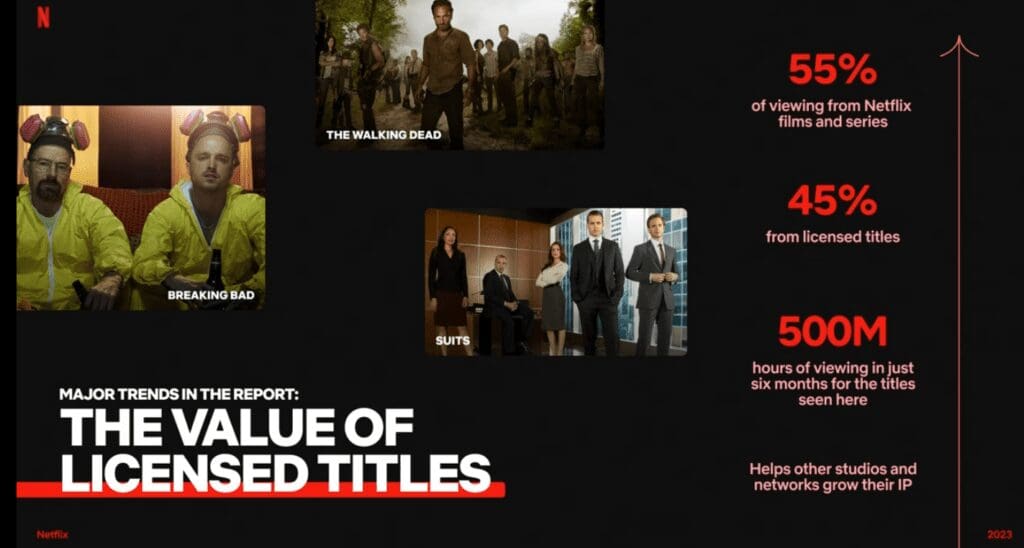
RELATED: Netflix Announces Live-Action Adaptation Of My Hero Academia, Creating Fear In Anime Fans
Original series and movies dominate the top of the chart; with the split between original and licensed titles was more even: About 55 percent of viewing was for originals, and 45 percent was for licensed shows and films. As for content below the threshold, the company rounded them to 100,000 hours as most would fall between 50,000 and 149,999 hours — barely a drop in the streamer’s more than 100 billion viewing hours for the six months.
As for the timing of the data release, Netflix co-CEO, Ted Sarandos, said the company has been on a “continuum” of becoming more transparent as its streaming business has matured.
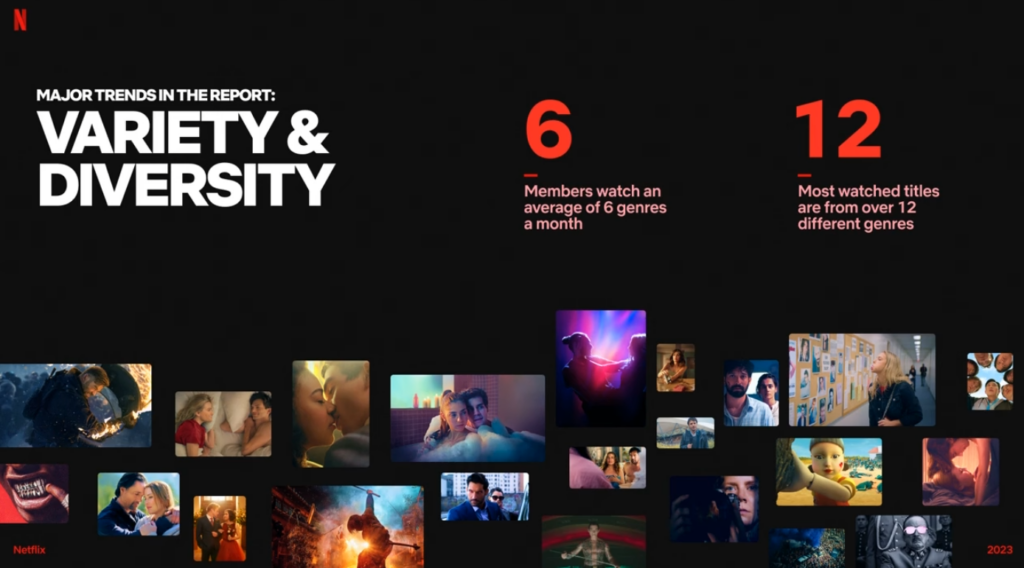
Netflix plans to continue issuing semiannual reports of its viewing time, but Sarandos said he wasn’t sure other streamers would follow his company’s lead. “They’re all running their businesses as they see fit, and they’re all at different places in their existence,” Sarandos said of other platforms.
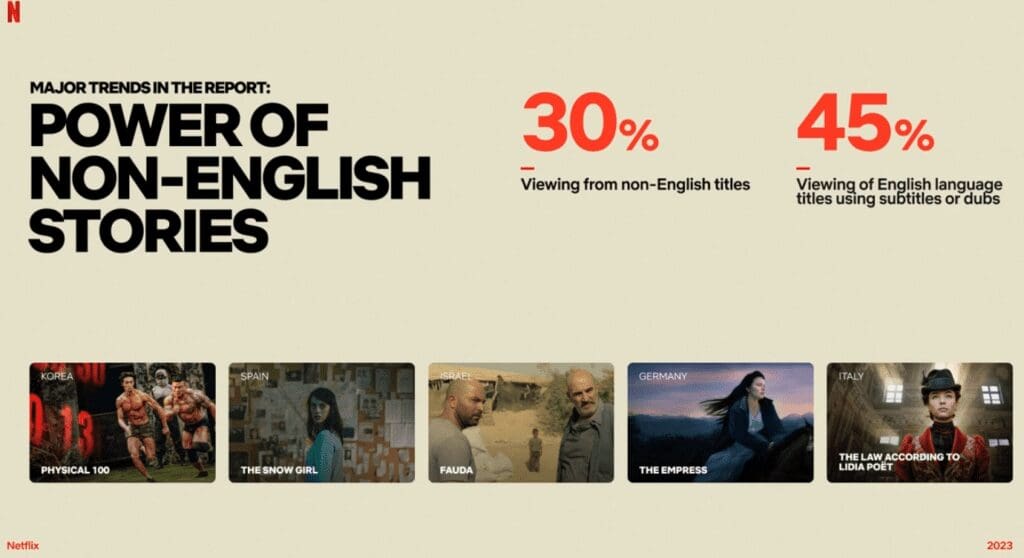
This is a massive win for actors, writers, and directors negotiating their subsequent contracts, and for people looking to pitch ideas for their most popular titles. It also demonstrates how far ahead of the competition Netflix is regarding viewing hours.
Netflix’s unprecedented decision to disclose its streaming data represents a significant shift in the streaming industry’s approach to transparency and customer insight. They are clarifying global viewing trends and establishing a new standard for data sharing in the digital age. Saranados said about the release of the data, “I think it’s probably more industry facing in terms of what kind of things are… just generally pleasing folks around the world. So I think it kind of helps creators get a better sense of [the audience]. Perhaps people who cover us in the industry press get a better sense of that as well.”
Is Netflix finally going the right way delivering transparency in media, or are they finally releasing data that should have been industry-standard as a soothe over for the media unions? Let us know what you think below.

Leave a Reply